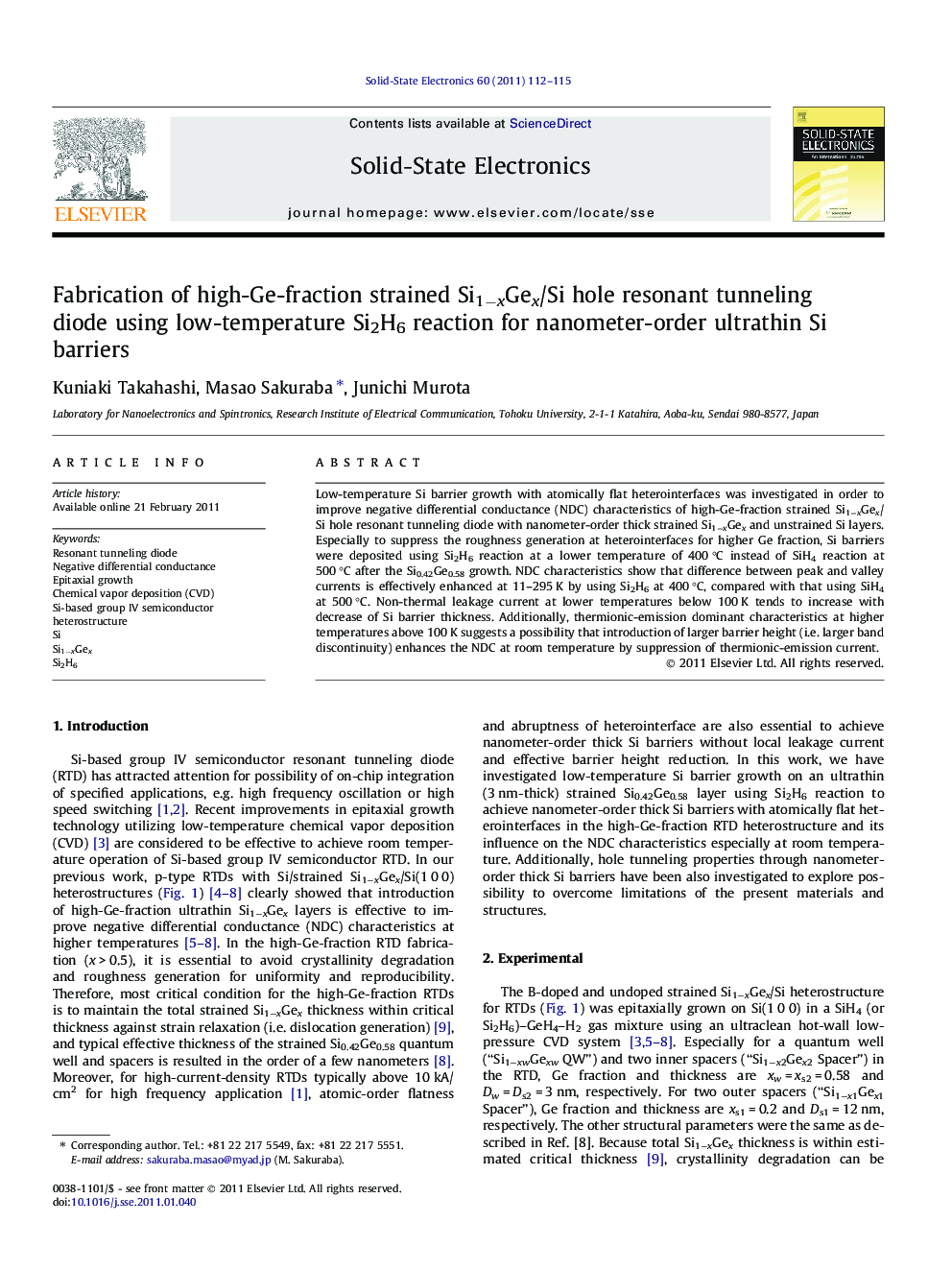| Article ID | Journal | Published Year | Pages | File Type |
|---|---|---|---|---|
| 748349 | Solid-State Electronics | 2011 | 4 Pages |
Low-temperature Si barrier growth with atomically flat heterointerfaces was investigated in order to improve negative differential conductance (NDC) characteristics of high-Ge-fraction strained Si1−xGex/Si hole resonant tunneling diode with nanometer-order thick strained Si1−xGex and unstrained Si layers. Especially to suppress the roughness generation at heterointerfaces for higher Ge fraction, Si barriers were deposited using Si2H6 reaction at a lower temperature of 400 °C instead of SiH4 reaction at 500 °C after the Si0.42Ge0.58 growth. NDC characteristics show that difference between peak and valley currents is effectively enhanced at 11–295 K by using Si2H6 at 400 °C, compared with that using SiH4 at 500 °C. Non-thermal leakage current at lower temperatures below 100 K tends to increase with decrease of Si barrier thickness. Additionally, thermionic-emission dominant characteristics at higher temperatures above 100 K suggests a possibility that introduction of larger barrier height (i.e. larger band discontinuity) enhances the NDC at room temperature by suppression of thermionic-emission current.
Research highlights► Fabrication of high-Ge-fraction strained Si1−xGex/Si hole resonant tunneling diodes. ► Low-temperature Si barrier growth with atomically flat heterointerfaces. ► Si2H6 reaction at 400 °C on Si0.42Ge0.58 in low-pressure chemical vapor deposition. ► Improvement in negative differential conductance characteristics at room temperature. ► Thermionic-emission dominant characteristics at higher temperatures above 100 K.
